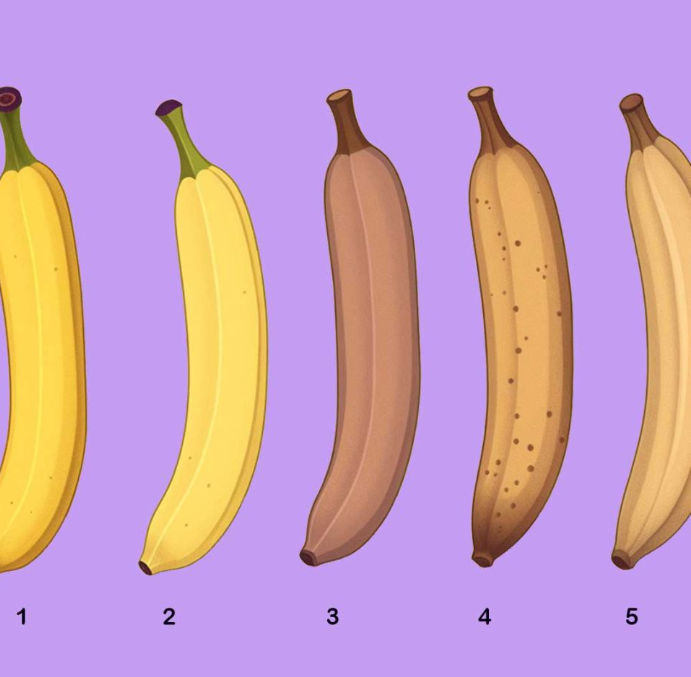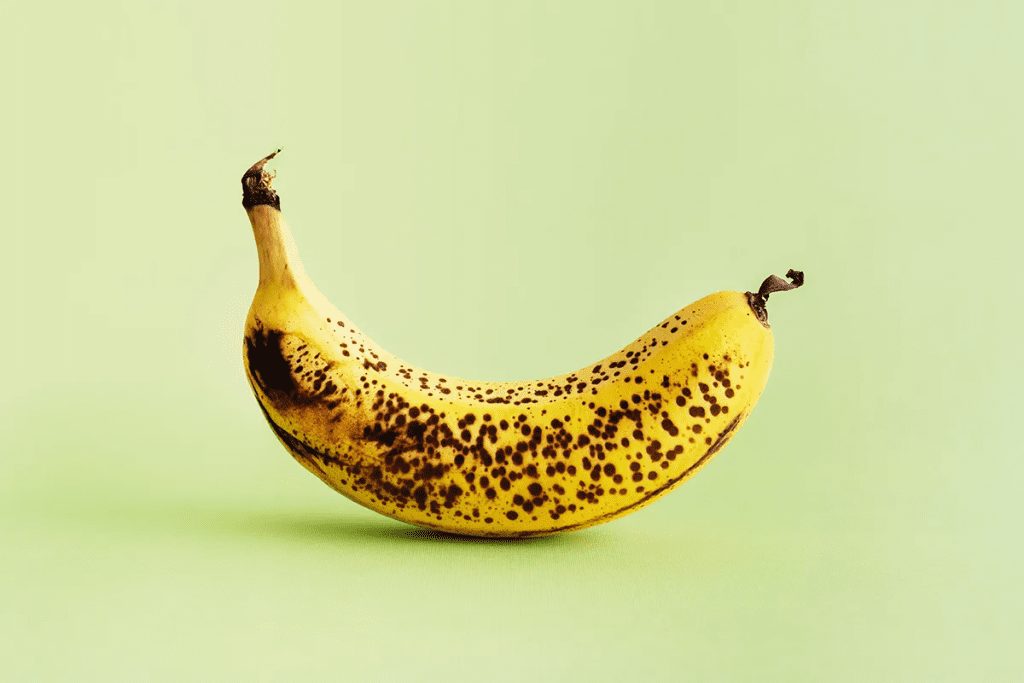Bananas, those delightful, crescent-shaped fruits, have become a staple in many households worldwide. But did you know that the ripeness of a banana can have a significant impact on its nutritional benefits and how it affects your health? Each stage of ripeness—from green to fully brown—presents unique advantages. So, the next time you reach for a banana, you might want to consider which stage is best for your body’s needs.

In this article, we’ll explore the different stages of banana ripeness, their health benefits, and how choosing the right banana could make a difference in your daily diet.
1. Young and Green: The Resistant Starch Powerhouse
When bananas are in their youthful, green stage, they are firm and less sweet. You might think they’re not quite ready to eat, but for certain health goals, they can be a powerhouse of nutrition.
- Appearance: Vibrant green skin, firm texture.
- Taste: Mildly tangy and starchy, almost like a potato.
- Nutritional Profile: Green bananas are rich in resistant starch, a type of carbohydrate that acts more like fiber than a sugar. Resistant starch isn’t digested in the small intestine, which can help regulate blood sugar levels and improve gut health by promoting the growth of healthy bacteria. Additionally, green bananas are a good source of potassium and vitamin C, both crucial for maintaining heart health and boosting immunity.
- Health Benefits: These bananas are perfect for those looking to manage their weight or regulate blood sugar levels, as the resistant starch can keep you feeling fuller for longer and prevent blood sugar spikes.
2. Firm and Yellow: The Energy Booster
When bananas transition from green to yellow, they strike a balance between being firm and sweet. These bananas are often what most people envision when they think of a perfect banana.
- Appearance: Bright yellow skin with firm flesh.
- Taste: Classic banana sweetness with a mild, smooth flavor.
- Nutritional Profile: As bananas ripen, their resistant starch begins to convert into simple sugars. Yellow bananas still retain some resistant starch but offer a higher level of natural sugars for quick energy. They’re also an excellent source of potassium, making them a great choice for athletes or anyone needing a quick energy boost.
- Health Benefits: Ideal for a pre- or post-workout snack, firm yellow bananas provide quick energy without the sharp spikes in blood sugar. Plus, the combination of natural sugars and potassium helps replenish glycogen stores and prevent muscle cramps.
3. Spotted Yellow: The Sweet Spot for Digestion
As bananas continue to ripen, they develop brown spots on their skin, a sign that their sugars are becoming more concentrated. This is when they start tasting even sweeter and creamier.

- Appearance: Yellow skin with brown spots appearing.
- Taste: Sweeter and creamier than firm yellow bananas, with a slight tang.
- Nutritional Profile: Spotted bananas are easier to digest because their starches have turned into sugars. They also have higher levels of antioxidants, which increase as bananas ripen, helping to fight inflammation and support heart health. Despite being sweeter, they still pack a punch with their potassium content.
- Health Benefits: Spotted yellow bananas are great for those with sensitive stomachs or anyone looking for a natural, easy-to-digest energy boost. The antioxidants in these bananas also provide anti-inflammatory benefits.
4. Brown and Soft: The Perfect Natural Sweetener
As bananas ripen further, their skin turns brown, and the flesh becomes soft. At this stage, bananas are perfect for recipes and offer an even sweeter flavor.

- Appearance: Mostly brown skin with soft texture.
- Taste: Very sweet with a rich banana flavor.
- Nutritional Profile: Brown bananas have fully converted their resistant starch into sugars, making them a natural source of sweetness. While they’re higher in sugar than their green or yellow counterparts, they’re still packed with potassium and vitamins.
- Health Benefits: Brown bananas are ideal for those looking for a natural sweetener for smoothies, baked goods, or desserts. Additionally, they may help soothe acid reflux or heartburn, thanks to their soft texture and high pH level.
5. Brown and Overripe: The Baker’s Dream
When bananas become fully brown or even black, many people might think they’re past their prime. However, overripe bananas are often the best choice for certain culinary purposes.

- Appearance: Fully brown or blackened skin, extremely soft and mushy texture.
- Taste: Exceptionally sweet with an intense banana flavor.
- Nutritional Profile: Overripe bananas are the sweetest of all stages, with all their starch fully converted into sugars. They’re also high in antioxidants, which can provide additional health benefits. While they’re not the best choice for snacking due to their texture, they’re perfect for baking.
- Health Benefits: Use overripe bananas in banana bread, smoothies, or as a natural sweetener in recipes. They’re easy on the digestive system and provide a rich, nutrient-packed addition to your favorite dishes.
Choosing the Right Banana for Your Health Goals
Now that you understand the different stages of banana ripeness, how do you choose the best one for your needs? Here’s a quick guide:
- For Weight Management: If you’re looking to keep your sugar intake low, young green bananas or firm yellow bananas are your best bet. Their resistant starch will help you feel full longer and keep your blood sugar levels steady.
- For Quick Energy: Spotted yellow bananas are ideal for those moments when you need an instant energy boost, whether before a workout or during a busy day.
- For Digestive Health: Green bananas are excellent for promoting gut health, thanks to their high resistant starch content. On the other hand, overripe bananas may be gentler on the stomach, making them a good option for those with sensitive digestion.
- For Sweetening Recipes: Overripe bananas are your go-to when you want to add natural sweetness to smoothies, baked goods, or other recipes. They’re a healthier alternative to refined sugar and pack in extra nutrients.
Conclusion: Which Banana Will You Choose?

Whether you’re reaching for a green banana to boost your gut health, a firm yellow banana for an energy boost, or an overripe banana for your next batch of banana bread, each stage of ripeness offers something unique. The banana you choose to eat can influence everything from your blood sugar levels to your digestion and energy.
The next time you open the fruit bowl, consider what your body needs and choose the perfect banana to meet those needs. From health benefits to taste preferences, your choice could make a meaningful impact on your overall well-being.


